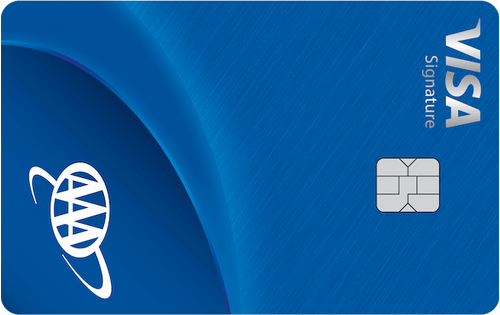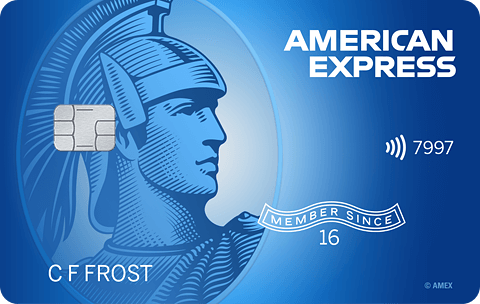- myFICO® Forums
- FICO Scoring and Other Credit Topics
- Understanding FICO® Scoring
- Re: FICO 9 inquiry impact and aging
- Subscribe to RSS Feed
- Mark Topic as New
- Mark Topic as Read
- Float this Topic for Current User
- Bookmark
- Subscribe
- Mute
- Printer Friendly Page
FICO 9 inquiry impact and aging
Is your credit card giving you the perks you want?
Browse credit cards from a variety of issuers to see if there's a better card for you.
- Mark as New
- Bookmark
- Subscribe
- Mute
- Subscribe to RSS Feed
- Permalink
- Report Inappropriate Content
FICO 9 inquiry impact and aging
5/1/16: Initial post
5/3/16: UPDATE - have new mortage inquiry, so will re-pull 31 days from now.
6/4/16: UPDATE - Theory debunked.
New inquiry counting on EQ, only moved 10 points on FICO 9 and EQ did not move to where EX is currently.
| Score | 6/1/15 | 6/4/15 | Change |
| EQ FICO 9 | 786 | 775 | -11 |
| EQ FICO 9 AU | 789 | 779 | -10 |
| EQ FICO 9 BC | 777 | 767 | -10 |
Starting a thread for this, as stated previously I have a significant disparity between my FICO 9's on EQ and EX and the only thing that made much rational sense was that I had an inquiry on EX a few days prior to the first pull. Tradelines are identical between the two, and since I've had far more movement on EX FICO 9 than anywhere else over the last two months in comparison appears as though inquiries may be scored differently than prior versions of the algorithm, with recent inquiries being penalized incredibly harshly... FICO SMASH style.
I was hoping to catch the AAOA 2->3 year transition but apparently that didn't happen or it means absolutely zilch FICO wise unlike 1->2 years (possible). The MF interface suggests I did my math correctly, but of course that's not reference.
Anyway one other significant change, my Amex inquiry from 3/1/16 turned 2 months old today, and lo and behold there was a non-trivial shift on EX FICO 9 whereas EQ FICO 9 stood still. There also is a much larger gain on EX than EQ FICO 9 between the first two pulls, which suggests there may be another breakpoint at 1 month as well.
Notes regarding the data points:
3/2/16: 6/14 revolving accounts with balances, $873 total (limits 125K+)
4/28/16: 1/13 revolving accounts with balances, $20 total
5/1/16: 1/13 revolving accounts with balances, $20 total
It appears that on EQ FICO 04 classic and AU I lost a point for being somewhat under a utilization sweetspot, first indication I've seen of having one on my file, needs more testing and sad that I got a similar 1 point bump on BC there for the same changes apparently. I haven't the faintest idea why EX FICO 2 AU moved as none of the other Risk Model v2 options moved, neither classic nor BC. Also TT, think this also likely demonstrates that FICO 8 is more sensitive to number of tradelines balances than FICO 04/98 were per a previous discussion we had.
Anyway data for the interested:
| Experian | 3/2/16 | 4/28/16 | 5/1/16 |
| FICO 8 | 711 | 724 | 724 |
| FICO 2 | 722 | 723 | 723 |
| FICO 8 AU | 710 | 722 | 722 |
| FICO 2 AU | 708 | 711 | 735 |
| FICO 8 BC | 727 | 740 | 740 |
| FICO 3 | 677 | 678 | 678 |
| FICO 2 BC | 721 | 722 | 722 |
| FICO 9 | 706 | 735 | 745 |
| FICO 9 AU | 721 | 747 | 756 |
| FICO 9 BC | 705 | 731 | 740 |
| Equifax | 3/2/16 | 4/28/16 | 5/1/16 |
| FICO 8 | 701 | 714 | 714 |
| FICO 5 | 694 | 693 | 693 |
| FICO 8 AU | 712 | 729 | 729 |
| FICO 5 AU | 691 | 690 | 690 |
| FICO 8 BC | 705 | 719 | 719 |
| FICO 5 BC | 710 | 711 | 711 |
| FICO 9 | 780 | 789 | 789 |
| FICO 9 AU | 784 | 792 | 792 |
| FICO 9 BC | 771 | 779 | 779 |





















- Mark as New
- Bookmark
- Subscribe
- Mute
- Subscribe to RSS Feed
- Permalink
- Report Inappropriate Content
Re: FICO 9 inquiry impact and aging






| Total CL: $321.7k | UTL: 2% | AAoA: 7.0yrs | Baddies: 0 | Other: Lease, Loan, *No Mortgage, All Inq's from Jun '20 Car Shopping |
BoA-55k | NFCU-45k | AMEX-42k | DISC-40.6k | PENFED-38.4k | LOWES-35k | ALLIANT-25k | CITI-15.7k | BARCLAYS-15k | CHASE-10k










- Mark as New
- Bookmark
- Subscribe
- Mute
- Subscribe to RSS Feed
- Permalink
- Report Inappropriate Content
Re: FICO 9 inquiry impact and aging
@Revelate wrote:Starting a thread for this, as stated previously I have a significant disparity between my FICO 9's on EQ and EX and the only thing that made much rational sense was that I had an inquiry on EX a few days prior to the first pull. Tradelines are identical between the two, and since I've had far more movement on EX FICO 9 than anywhere else over the last two months in comparison appears as though inquiries may be scored differently than prior versions of the algorithm, with recent inquiries being penalized incredibly harshly... FICO SMASH style.
I was hoping to catch the AAOA 2->3 year transition but apparently that didn't happen or it means absolutely zilch FICO wise unlike 1->2 years (possible). The MF interface suggests I did my math correctly, but of course that's not reference.
Anyway one other significant change, my Amex inquiry from 3/1/16 turned 2 months old today, and lo and behold there was a non-trivial shift on EX FICO 9 whereas EQ FICO 9 stood still. There also is a much larger gain on EX than EQ FICO 9 between the first two pulls, which suggests there may be another breakpoint at 1 month as well.
Notes regarding the data points:
3/2/16: 6/14 revolving accounts with balances, $873 total (limits 125K+)
4/28/16: 1/13 revolving accounts with balances, $20 total
5/1/16: 1/13 revolving accounts with balances, $20 total
It appears that on EQ FICO 04 classic and AU I lost a point for being somewhat under a utilization sweetspot, first indication I've seen of having one on my file, needs more testing and sad that I got a similar 1 point bump on BC there for the same changes apparently. I haven't the faintest idea why EX FICO 2 AU moved as none of the other Risk Model v2 options moved, neither classic nor BC. Also TT, think this also likely demonstrates that FICO 8 is more sensitive to number of tradelines balances than FICO 04/98 were per a previous discussion we had.
Anyway data for the interested:
Experian 3/2/16 4/28/16 5/1/16 FICO 8 711 724 724 FICO 2 722 723 723 FICO 8 AU 710 722 722 FICO 2 AU 708 711 735 FICO 8 BC 727 740 740 FICO 3 677 678 678 FICO 2 BC 721 722 722 FICO 9 706 735 745 FICO 9 AU 721 747 756 FICO 9 BC 705 731 740 Equifax 3/2/16 4/28/16 5/1/16 FICO 8 701 714 714 FICO 5 694 693 693 FICO 8 AU 712 729 729 FICO 5 AU 691 690 690 FICO 8 BC 705 719 719 FICO 5 BC 710 711 711 FICO 9 780 789 789 FICO 9 AU 784 792 792 FICO 9 BC 771 779 779
Revelate, I continue to believe # cards reporting a balance has more weight in Fico 9 compared to Fico 8. Your data is not conclusive in this regard. Not sure about score shifts in the single digit utilization range.
Interestingly, your EQ Fico 9 results are so much higher than EX Fico 9 scores. Why? Also, based on score shifts, it kinda looks like EX could have you on a different scorecard than EQ.
Published info indicates lates are treated differently in Fico 9 with respect to impact over time (older delinquencies have lesser impact on Fico 9).
Go to the below post for links to Fico 9 articles.
Also, here is a link and a couple slides from a Fico World 2014 presentation.
Fico 8: .......EQ 850 TU 850 EX 850
Fico 4 .....:. EQ 809 TU 823 EX 830 EX Fico 98: 842
Fico 8 BC:. EQ 892 TU 900 EX 900
Fico 8 AU:. EQ 887 TU 897 EX 899
Fico 4 BC:. EQ 826 TU 858, EX Fico 98 BC: 870
Fico 4 AU:. EQ 831 TU 872, EX Fico 98 AU: 861
VS 3.0:...... EQ 835 TU 835 EX 835
CBIS: ........EQ LN Auto 940 EQ LN Home 870 TU Auto 902 TU Home 950
- Mark as New
- Bookmark
- Subscribe
- Mute
- Subscribe to RSS Feed
- Permalink
- Report Inappropriate Content
Re: FICO 9 inquiry impact and aging
@Thomas_Thumb wrote:Revelate, I continue to believe # cards reporting a balance has more weight in Fico 9 compared to Fico 8. Your data is not conclusive in this regard. Not sure about score shifts in the single digit utilization range.
Interestingly, your EQ Fico 9 results are so much higher than EX Fico 9 scores. Why? Also, based on score shifts, it kinda looks like EX could have you on a different scorecard than EQ.
Published info indicates lates are treated differently in Fico 9 with respect to impact over time (older delinquencies have lesser impact on Fico 9).
Go to the below post for links to Fico 9 articles.
Also, here is a link and a couple slides from a Fico World 2014 presentation.
Did you seriously just quote me the FICO slide for introductory credit education regarding differences between bureaus? ![]()
I did screw up putting anything FICO 04 in the post, I should've made that seperate. My fault, the number of balances was FICO 04 vs. FICO 8: of course there's not enough data to make an assertion FICO 8 vs FICO 9. Anyway that's a sidebar, back to the interesting stuff.
If you believe I'm on a different scorecard, somehow, what would you suggest would trigger that? Same dates on the lates, same date on the tax lien, no missing tradelines, no disputes, no funky AU's, it's a straight forward file and straight forward comparison.
Say they were on different scorecards: what produced a 10 point shift in a 3 day period when no balances changed? Something aged, or something fell off presumably? Nothing fell off, and everything has same deliquency dates, and open dates, and even FICO suggests my AAOA is line item identical, but the only substantial difference is the inquiry that I can find. Even on different scorecards, why would these behave differently? They don't under previous versions of the algorithm, is your theory that inquiries now are a bucketable item? That's theoretically possible, and would explain this potentially, but whether new inquiry is heavy penalty or bucketable, similar result.
Similarly how'd I gain 40 points in 2 months without a substantial change vis a vis non-trivial revolving utilization change, a tradeline changed it's status, or something came off and I'm not a thin or new file? That would've affected every other score too, absolutely, but in this case it didn't the scores demostrabably prove that. Obviously FICO 9 is different, but this is at least a valid data point, and we're still in the hypothesis stage as there's not enough data to prove it one way or the other, yet.
That said the refinance is coming, which'll drop an inquiry on every bureau... it'll be interesting to see what both EQ/EX do in this case and should shed some light on the discussion at any rate.
Also you posted the presentation, thank you, that does suggest it's more valid to make a comparison between bureaus on FICO 9 than on any prior version.
If you have a question about my files I'm happy to answer it.





















- Mark as New
- Bookmark
- Subscribe
- Mute
- Subscribe to RSS Feed
- Permalink
- Report Inappropriate Content
Re: FICO 9 inquiry impact and aging
@Revelate wrote:I did screw up putting anything FICO 04 in the post, I should've made that seperate. My fault, the number of balances was FICO 04 vs. FICO 8: of course there's not enough data to make an assertion FICO 8 vs FICO 9. Anyway that's a sidebar, back to the interesting stuff.
If you believe I'm on a different scorecard, somehow, what would you suggest would trigger that? Same dates on the lates, same date on the tax lien, no missing tradelines, no disputes, no funky AU's, it's a straight forward file and straight forward comparison.
Say they were on different scorecards: what produced a 10 point shift in a 3 day period when no balances changed? Something aged, or something fell off presumably? Nothing fell off, and everything has same deliquency dates, and open dates, and even FICO suggests my AAOA is line item identical, but the only substantial difference is the inquiry that I can find. Even on different scorecards, why would these behave differently? They don't under previous versions of the algorithm, is your theory that inquiries now are a bucketable item? That's theoretically possible, and would explain this potentially, but whether new inquiry is heavy penalty or bucketable, similar result.
Similarly how'd I gain 40 points in 2 months without a substantial change vis a vis non-trivial revolving utilization change, a tradeline changed it's status, or something came off and I'm not a thin or new file? That would've affected every other score too, absolutely, but in this case it didn't the scores demostrabably prove that. Obviously FICO 9 is different, but this is at least a valid data point, and we're still in the hypothesis stage as there's not enough data to prove it one way or the other, yet.
That said the refinance is coming, which'll drop an inquiry on every bureau... it'll be interesting to see what both EQ/EX do in this case and should shed some light on the discussion at any rate.
Also you posted the presentation, thank you, that does suggest it's more valid to make a comparison between bureaus on FICO 9 than on any prior version.
If you have a question about my files I'm happy to answer it.
As far as the EX score change between 4/28 and 5/1, is it possible the database could have updated prior to computing score but not show in the report? If not, did some HPs go from 11 months to 12 months resulting a moving to a lower INQ bin [April => May]? If so, were these HPs associated with something other than new credit?
CRAs have the ability to categorize hard inquiries and code them differently. Many hard inquiries have nothing to do with "seeking new credit". Common examples are opening savings accounts, opening checking accounts, joining a credit union, phone service, cable service, rental. As I recall, a majority of your HPs don't appear to be new credit related.
If EQ has not placed you on a different scorecard than EX, EQ may be excluding HPs not tied to new credit in it's Fico 9 score whereas EX includes them. If your only true difference relates to inquiries, then what's your hypothesis?
Fico 8: .......EQ 850 TU 850 EX 850
Fico 4 .....:. EQ 809 TU 823 EX 830 EX Fico 98: 842
Fico 8 BC:. EQ 892 TU 900 EX 900
Fico 8 AU:. EQ 887 TU 897 EX 899
Fico 4 BC:. EQ 826 TU 858, EX Fico 98 BC: 870
Fico 4 AU:. EQ 831 TU 872, EX Fico 98 AU: 861
VS 3.0:...... EQ 835 TU 835 EX 835
CBIS: ........EQ LN Auto 940 EQ LN Home 870 TU Auto 902 TU Home 950
- Mark as New
- Bookmark
- Subscribe
- Mute
- Subscribe to RSS Feed
- Permalink
- Report Inappropriate Content
Re: FICO 9 inquiry impact and aging
Well the recent one was credit seeking for certain on EX and there's no debating that one by the institution (Amex) and it matches the rest of the CC pulls I have on that bureau. Wall of text inc, my apologies.
Equifax, doesn't show me types so I will try to categorize them appropriately, only showing w/in last year +1 inquiry to show last prior to that:
Capital One Bank USA Na 08/23/2015: Credit Card
Pentagon FCU 07/31/2015: CU/PLOC - credit seeking but may be some dubiousness on this one
Cbcinnovis::IMPAC MTG DBA CAS 07/10/2015: should be deduped FICO 8/9
Chase Home Finance 07/03/2015: should be deduped FICO 8/9
Settlementone::BAY EQUITY LLC − 25 06/03/2015: should be deduped
Cbcinnovis::LOGIX FEDERAL CRE 05/30/2015: should be deduped, maybe not see below if I count the one counting the other but this one was well tracked to not count
Chase Home Finance 05/30/2015: Initial mortgage inquiry
Verizon Local−West 09/15/2014: Out of scoring range
I'm pretty comfortable in the de-dupes from my old dataset, and therefore I should have 3 4 scoreable inquiries on EQ with respect to FICO 8/9 with the most recent >6 months before the first data point.
Experian does give additional coding, similar older than 1 year don't care:
AMERICAN EXPRESS 03/01/2016 Unspecified: CC
CAP ONE NA 08/23/2015 Unspecified: CC
CHASE CARD 08/23/2015 Unspecified: CC
JCB BANK 08/03/2015 Unspecified: CC
CHASE CARD 07/31/2015 Unspecified: CC
CBC INNOVIS 07/10/2015 Real Estate: de-duped
CHASE MTG 07/03/2015 Real Estate: de-duped
SETTLEMENTONE 06/03/2015 Real Estate: de-duped
CBC INNOVIS 05/30/2015 Installment loan: uncertain, didn't see a drop when I took it at the time but counting for purposes now
CHASE MTG 05/30/2015 Real Estate: first mortgage pull
FIA CS 04/09/2014 Unspecified: Out of scoring range
By count, including the CBC Innovis one which I suspect is excluded based on name, 7 scorable inquiries with the most recent being 2 months ago, or a few days before the initial pull.
I am confident in stating that inquiries are the difference between the two files and I don't have any non-traditional data either; in prior models an inquiry was an inquiry, sum them up and sort into a bin, and there was no aging in a given year. We've got more than enough data to assert that for both FICO 04 and FICO 8 with a high degree of confidence.
FICO 9 though, my hypothesis is that this changed: the differences are number of scoreable inquiries (3 4 EQ, 7 EX) and the most recent (EQ 8/23/15 and EX 03/01/16). EQ between the first pull and the last pull was ~10 points and is easily explainable as number of revolving accounts with balances; however, EX has moved 40 points for the same time period, and that's not explainable by revolving utilization which has traditionally seen similar magnitude of changes in all FICO 8 and FICO 04 testing done over the years... and with the marketing slide suggesting that the algorithms will be more consistent between bureaus, this really shouldn't have changed.
The reasonable conclusion is that it is tied up with the inquiries, either in aggregate count or in distribution of age... we do have a difference in aggregate counts, but this hasn't changed over the time period, whereas the score has. The last two pulls in my opinion are pretty conclusive, the most recent inquiry is exactly one month older than it was the prior period, and that was another ~10 points. Handwaving math, likely the 1 month boundary was worth around 20 points if we make the reasonable assumption that the change in revolving utilization was roughly equivalent on both EQ and EX in terms of score magnitude on the likewise reasonable assumption that I'm in the same bucket on both.
If inquiry distribution is now bucketable, well that would be a significant departure, but the tax lien reports paid on both and either counts or doesn't, and the late distribution is the same, and the oldest account and even the AAOA is identical. The fact is we only see expected revolving utilization changes (minor) in FICO 8, and minimal movement in FICO 04 over the same time period. This is major difference between the algorithms, and at third review it appears to be tied in with inquiries... which maybe makes sense, maybe. Hard to say though given what's "reasonable" with people re-establishing credit during the time period, the data may have concluded that opening up a new account was a bigger sign of trouble than in the past, and if my hypothesis is correct it certainly would discourage large scale app sprees which is certainly "deviant" behavior.
ETA: couple of obvious datapoints to be gotten: snapshots of EX/EQ after making the mortgage refinance application sometime this week. Also EX/EQ snapshots 8/24/16 when everything else besides the Amex inquiry and the mortgage refinance inquiries are gone (assuming I don't run out to get a HELOC or student loan just yet, HELOC would land on EQ assuredly at least).





















- Mark as New
- Bookmark
- Subscribe
- Mute
- Subscribe to RSS Feed
- Permalink
- Report Inappropriate Content
Re: FICO 9 inquiry impact and aging
My impression is that recent inquiries are given less, rather than more, weight in FICO 9 than in FICO 8.































Total revolving limits 569520 (505320 reporting) FICO 8: EQ 689 TU 684 EX 682
- Mark as New
- Bookmark
- Subscribe
- Mute
- Subscribe to RSS Feed
- Permalink
- Report Inappropriate Content
Re: FICO 9 inquiry impact and aging
@SouthJamaica wrote:My impression is that recent inquiries are given less, rather than more, weight in FICO 9 than in FICO 8.
Need more data. Assumptions have a well known cliche ![]() .
.
To date I haven't seen any from anyone else on this topic (not to say it doesn't exist), hopefully others will chime in with datapoints in the future.





















- Mark as New
- Bookmark
- Subscribe
- Mute
- Subscribe to RSS Feed
- Permalink
- Report Inappropriate Content
Re: FICO 9 inquiry impact and aging
Why are there 14 potential Revolving balance cards on 3/2/16, and only 13 potential Revolving balance cards on 4/28 or 5/1 ?
Appologies if I missed it in the wall of text presented here.
Oct 2014 $46k on $127k 36% util EQ 722 TU 727 EX 727
April 2018 $18k on $344k 5% util EQ 806 TU 810 EX 812
Jan 2019 $7.6k on $360k EQ 832 TU 839 EX 831
March 2021 $33k on $312k EQ 796 TU 798 EX 801
May 2021 Paid all Installments and Mortgages, one new Mortgage EQ 761 TY 774 EX 777
April 2022 EQ=811 TU=807 EX=805 - TU VS 3.0 765

- Mark as New
- Bookmark
- Subscribe
- Mute
- Subscribe to RSS Feed
- Permalink
- Report Inappropriate Content
Re: FICO 9 inquiry impact and aging
@NRB525 wrote:Why are there 14 potential Revolving balance cards on 3/2/16, and only 13 potential Revolving balance cards on 4/28 or 5/1 ?
Appologies if I missed it in the wall of text presented here.
Newp you didn't miss it: I closed the irritating Wally card in March taking down the revolving count by 1.
No change on any score model worth mentioning (FICO 8 or FICO 04) as expected.























